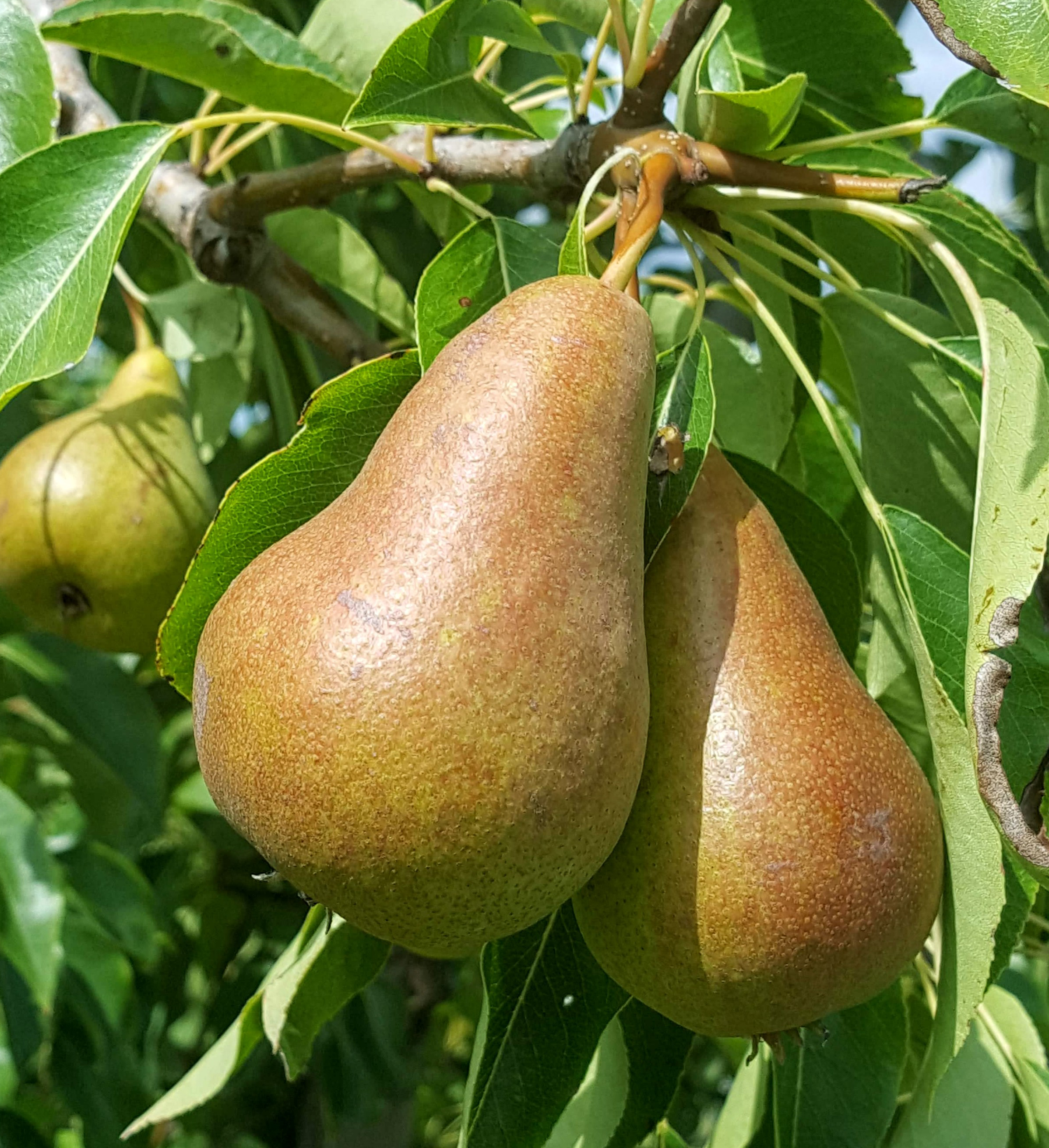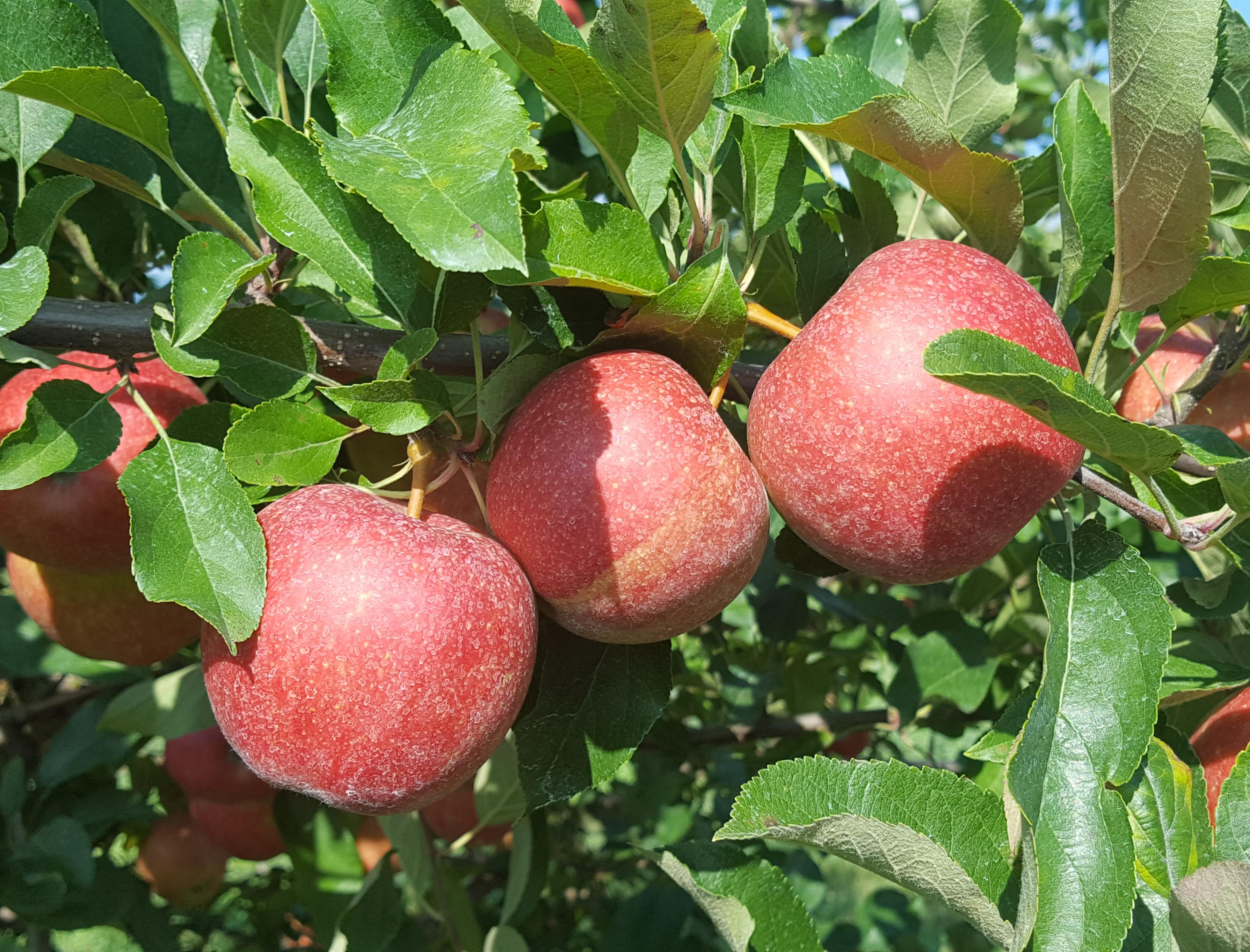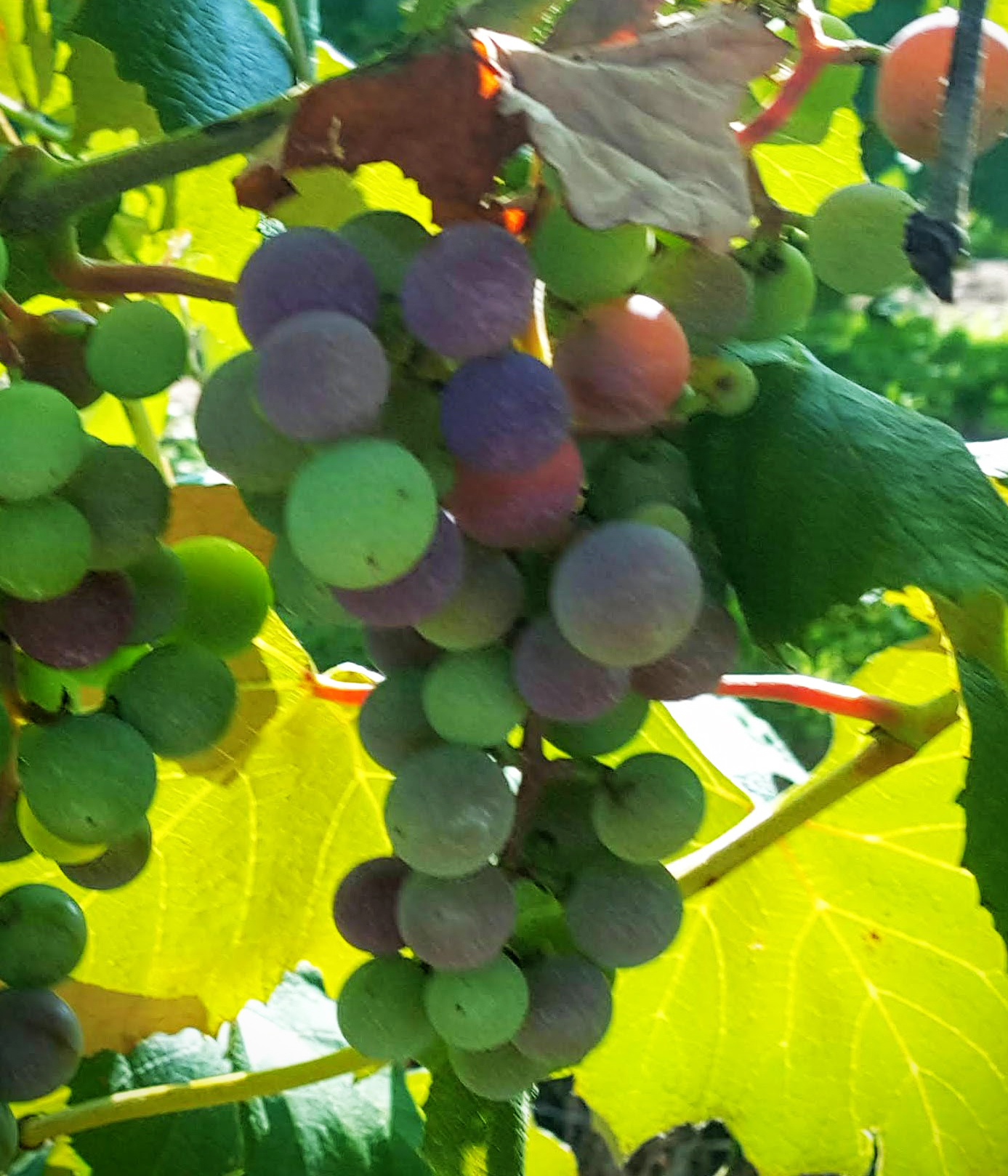Southwest Michigan fruit update – Aug. 20, 2019
Summer fruit harvest is winding down. Growers are beginning to harvest plums, pears and early apples.

Weather
Last week was warm and dry. Highs were in the upper 80s and lows in the 60s. The weekend was wet with storms on Friday and Sunday with clouds and showers between storms on Saturday. Rainfall from these storms was spotty. Totals for the week ranged from 0.5 to 1.9 inches. Rainfall totals for the season are 16 to 22 inches for sites across the region since April 1. The average is just less than 19 inches. The potential evaporation for the season since March 1 is 20 inches of water.
The dry conditions in July and August have allowed many soils to dry. With the shorter days, plants are using about 0.15 inches of water on sunny days. Adjust irrigation schedules to match your soil conditions and the reduced demand.
The forecast this week is for possible rain Tuesday and Wednesday then cooler with highs near 70 and lows around 50. We are getting heavy dews every morning and occasional fog. Last week, we accumulated heat about 200 growing degree days (GDD) base 42 and 146 GDD base 50. It will be cooler into September but the long-term forecast is for a warm fall.
|
Southwest Michigan GDD summary from March 1 – Aug. 18, 2019 | |||
|---|---|---|---|
|
Station |
GDD 42 F |
GDD 45 F |
GDD 50 F |
|
2,907 |
2,517 |
1,927 |
|
|
2,950 |
2,558 |
1,962 |
|
|
2,723 |
2,346 |
1,777 |
|
|
Average for the SW region |
2,918 |
2,528 |
1,937 |
|
Accumulation last week |
202 |
181 |
146 |
Check out the animated weather forecasts from Jeff Andresen at the weather tab in the Michigan State University Extension Fruit & Nuts Page. Articles and other regional reports can be found at the Fruit News page.
Tree fruit

Recent rains will help to size tree fruit but also favor disease development. August is the time to take leaf samples for nutritional analysis and soil samples for nematode analysis. Trap catches for many late season moth pests are up. Biofix for first generation oriental fruit moth was May 6 (165 GGD base 45) at the Trevor Nichols Research Center. Oriental fruit moth trap catches are up in many orchards. The third generation is emerging now and this will continue for several weeks. Biofix of obliquebanded leafroller was June 14. The summer generation flight is still underway.
Brown marmorated stink bug juveniles are being caught in traps and we should see adults soon. Summer adults are predicted to start appearing Aug. 19 in central Berrien County according to a degree-day model based on day length and heat unit accumulation. Potato leafhopper feeding causes hopper burn on sensitive plants. The trap catch of male San Jose scale is still increasing for the sixth straight week at the Trevor Nichols Research Center. Twospotted spider mites have been building in some young fruit tree plantings, causing leaf browning and stunted growth.
In peaches, the Loring group of varieties (Bounty, Canadian Harmony and PF17) will begin soon, about one week later than normal. Peaches are scarce in southwest Michigan due to the loss of fruit buds in January to extreme cold. Local farm markets in southwest Michigan are generally relying on peaches from Grand Rapids and other growing areas. As a result, the varieties sold may not match the estimated peach harvest dates given for the area by Enviroweather.
Oriental fruit moth and San Jose scale are the primary insect concerns at this time. Oriental fruit moth can still be a problem on first and second leaf peach trees if terminal growth is still tender and attractive to larvae, which burrow into the shoot tips.
In cherries, post-harvest chlorothalonil applications help reduce late season cherry leaf spot buildup without risk of resistance buildup. Cherry leaves are always susceptible to leaf spot, so management is needed to maintain a healthy leaf canopy during the entire season. Due to the dry conditions and post-harvest sprays many cherry orchards still have a good canopy of leaves, but a few orchards are nearly defoliated.
In plums, Castleton harvest will start soon. Winter damage to cold tender varieties has resulted in abundant root sucker growth in some orchards. Potential insect pests now are obliquebanded leafroller, codling moth and cherry and apple maggot. Spotted wing Drosophila can be a problem of ripe plums.

In apples, Zestar fruit background color is brightening and sugar content increase indicates that harvest of this variety is not far off. Estimated harvest dates for apples are approximately six to eight days later than normal and about eight days later than last year. ReTain applications for harvest management (stop drop) are generally recommended at 30 and 14 days before harvest. The Enviroweather apple maturity app can be used to estimate predicted harvest dates for your area.
Bitter rot symptoms on apple fruit are showing up. This disease is favored by hot, wet weather. The Enviroweather sooty blotch and flyspeck model indicates that fungicides to reduce these diseases may be necessary. The flight of the second generation of codling moth is declining. Codling moth, oriental fruit moth and obliquebanded leafroller are threats to developing fruit. All three of these pests are flying and laying eggs in the next few weeks.
Apple maggot fly catches are continuing in the Trevor Nichols Research Center trap line. Yellow sticky traps are used to track emergence of this fly and red sticky sphere traps plus attractive scent lures are used to monitor egg laying. This is a pest of sandy soils.
Small fruit
Spotted wing Drosophila trap catches are high. This pest’s population builds to very high numbers into the fall. It breeds on wild and commercial berries and only takes 10 to 14 days for the fly to go from egg to egglaying adult. Monitor for this pest in the field and field edges and protect ripening fruit. Potato leafhoppers are common and sensitive crops should be protected.

Grapes are passing through veraison. Veraison has begun in Concord. Grape berries become resistant to black rot infection at veraison. We are in the late summer when we have heavy dews every morning and downy mildew can spread quickly. In juice grapes, the canopy has closed and the fruit is hidden behind several layers of leaves. Slow down and increase gallonages to get good control. Most diseases are established in grapes; both downy mildew and powdery mildew on leaves and fruit and phomopsis can be found in vineyards now. Grape berry moth third generation egglaying began about two weeks ago. See the “MSU vineyard IPM scouting report – Aug. 14, 2019” for more information.
Blueberry harvest is winding down. Many smaller growers have finished for the season. Growers are harvesting late season varieties such as Elliott and Aurora. The primary pest concern is controlling SWD. Protect your fruit from SWD. Spray coverage needs to be maintained until harvest is finished. You should be sampling the fruit.
Balancing harvest and irrigation with the need to maintain good insecticide coverage to reduce SWD can create a real scheduling problem. Blueberries are using about 0.15 inches of water a day and growers are irrigating. Maintaining good plant water relations in this dry season is important. Fruit bud development is starting and drought conditions can reduce next year’s crop potential by reducing flower bud numbers.
Strawberries are growing well after renovation. The fields need to be irrigated for good plant growth. After the leaves emerge, treat with a material to control potato leafhopper to prevent this pest from stunting the plants. Include fungicides to protect the leaves from foliar diseases. See MSU Extension’s “Protect strawberries from foliar diseases after renovation” for more information.
Raspberry harvest continues. Summer raspberries are finished. Fall raspberry season is just beginning with bloom on the primocanes. Raspberries and blackberries are very attractive to SWD and fruit needs to be protected from this pest. One effective way to reduce SWD is to shorten the harvest interval to two days and pick all ripe fruit. Sort out the soft berries and destroy them away from the field. In summer raspberries, remove old floricanes to increase sunlight and air flow in the planting reducing disease.
Related articles
- Southwest Michigan fruit update – Aug. 13, 2019
- MSU vineyard IPM scouting report – Aug. 14, 2019
- Predicted 2019 apple harvest dates
- Don’t let downy mildew get you down
- What can be done for late season downy mildew on grapes?
- Irrigating Michigan blueberries
- Sampling berries for spotted wing drosophila larvae
- SWD Management Recommendations for Michigan Blueberry
- Spotted Wing Drosophila Management Recommendations for Michigan Raspberry and Blackberry Growers
- Protect strawberries from foliar diseases after renovation



 Print
Print Email
Email
